A Deep Dive into North India Pandit Practices in Hyderabad
Introduction
The Presence of North India Pandits in Hyderabad
North India Pandits have built a strong community in Hyderabad. Over the years, families have migrated for work, education, and better opportunities. With them, they brought rich traditions, unique rituals, and cultural practices. Their presence adds diversity to Hyderabad's already vibrant spiritual landscape.
These Pandits are well-known for conducting essential Hindu ceremonies. They help with weddings, pujas, Griha Pravesh, and religious festivals. Their detailed approach sets them apart from local priests. Many families in Hyderabad specifically seek North India Pandits for these important rituals.
Unique Rituals and Practices
The practices of North India Pandits differ from those of South Indian priests. One example is their pronunciation of Sanskrit mantras. They also use a distinct set of pooja materials and follow North Indian customs. Common rituals include Satyanarayan Katha, Mundan, and Annaprashan.
North India Pandits follow the Panchang, a Hindu calendar, for choosing auspicious dates. They are particular about Muhurat and Vedic procedures. Their methods reflect the cultural heritage of regions like Uttar Pradesh and Bihar. Many Hyderabad families admire their sincerity during religious events.
Adaptation and Community Support
North India Pandits in Hyderabad have adapted to the local environment. They have built networks to support each other and their communities. Many organize cultural programs, language classes, and religious gatherings. These activities strengthen bonds between families.
The demand for North India Pandits continues to grow in Hyderabad. They are approachable and offer guidance for various life events. Families trust their expertise and involvement in upholding traditions. This connection helps preserve North Indian practices in the heart of South India.
Historical Background of Pandit Practices
Roots of North Indian Pandit Traditions
Pandit practices in North India trace back many centuries. These traditions grew from ancient Vedic customs, focusing on precise rituals and Sanskrit recitations. Over time, North Indian pandits developed unique methods for conducting ceremonies, prayers, and life cycle events. Each region contributed distinct customs, creating a rich diversity within the broader framework of Hindu religious practice.
Family lineages played a key role in preserving and transmitting pandit practices. Specialized knowledge about rituals and scriptures passed from one generation to the next. This ensured that traditions remained authentic and adapted slowly to changing contexts. Cultural exchanges within North India further shaped the rituals, making them both region-specific and adaptable.
Migration and Cultural Adaptation in Hyderabad
The movement of North Indian pandits to Hyderabad began during the late Mughal and early Nizam periods. These migrations were driven by opportunities for religious service, patronage by rulers, and demand from North Indian migrant communities. Pandits adapted their practices to local needs, combining traditional North Indian rituals with elements specific to Hyderabad.
Some key reasons for migration included:
- Seeking better prospects in princely states.
- Serving North Indian business communities in Hyderabad.
- Expanding influence of Sanskrit education and ritual expertise.
This blending resulted in distinctive ceremonial styles that are still observed today. Pandits in Hyderabad often adjusted the calendar of festivals and rituals based on local culture while retaining core North Indian elements.
Influence of Historical Events and Social Change
Historical events shaped the practice and evolution of pandit traditions in Hyderabad. The arrival of new communities and changing political climates influenced how rituals were performed. The Nizam’s court and later, Hyderabad’s cosmopolitan environment, opened spaces for inter-regional exchanges.
The table below summarizes key influences on North Indian pandit practices in Hyderabad:
|
Period |
Influence |
|
Mughal Era |
Migration, royal patronage |
|
Nizam Period |
Local adaptation, cultural blend |
|
Modern Era |
Urbanization, inter-community ties |
As Hyderabad grew, pandit practices continued to evolve, shaped by both continuity and change. These traditions remain a vital part of the city’s spiritual and social landscape.
Role of Pandits in Religious Ceremonies
Guiding Rituals and Traditions
Pandits are central to North Indian religious ceremonies in Hyderabad. They hold deep knowledge of Vedic texts, mantras, and customs. Their expertise ensures that each step of a puja or havan is done correctly. Without a pandit, many families feel the rituals would lack authenticity and meaning. Pandits explain the significance of each act, helping everyone understand the purpose behind the prayers. They often guide the family step-by-step through the ceremony, calming nerves and answering questions.
During weddings, griha pravesh, and other key events, pandits set the spiritual tone. They recite mantras, perform homas, and chant shlokas with precise intonation. Their presence is especially valued for life milestones. Pandits may also advise families on the ideal dates and times to hold rituals, based on astrological charts. This helps ensure auspiciousness and tradition are maintained.
Connecting Communities through Rituals
In Hyderabad, North India pandit practices help connect families with their cultural roots. The pandit serves as a bridge, keeping North Indian traditions alive even outside their native regions. This is vital for migrant families who wish to preserve their identity. Often, pandits tailor ceremonies to include local elements while keeping the core rites intact. This balance helps the community feel at home in a new city.
Pandits also organize community pujas and festival celebrations. These events strengthen social ties among North Indian groups in Hyderabad. By officiating at religious gatherings, they create a sense of belonging and collective memory. Their role goes beyond ritual: they often act as advisers and mediators in family or social matters.
Responsibilities Beyond Ritual Performance
The role of a North India pandit in Hyderabad is not limited to chanting mantras. They counsel families on important decisions, from naming ceremonies to last rites. Some pandits write or interpret horoscopes and offer guidance for auspicious events. They may help select suitable dates for marriages or housewarmings. This advice is based on ancient scriptures and astrological knowledge.
Pandits also teach religious values to younger generations. They hold classes or satsangs where children learn about rituals and Sanskrit hymns. Through these efforts, pandits ensure traditions continue across generations. Their influence shapes not only ceremonies but also the everyday spiritual life of families in Hyderabad.
Community and Cultural Significance
Building Bonds Through Rituals
North India Pandit practices in Hyderabad act as a thread that connects families and neighborhoods. Many communities organize collective pujas, satsangs, and festivals. These events help people from similar backgrounds find a sense of belonging in a new city. Local temples often serve as gathering points where traditions are shared and passed down. Children learn about their heritage by watching, listening, and participating. Elders play a critical role in maintaining the authenticity of each ceremony. Their presence ensures the continuation of these customs.
Preserving Identity Amid Diversity
Hyderabad is a city with people from many regions and faiths. North India Pandit practices stand out as a marker of cultural identity. When families invite a Pandit for weddings, housewarmings, or festivals, they reinforce connections to their roots. These rituals allow migrant communities to express their unique heritage. This helps them maintain a sense of self amid unfamiliar surroundings. Language, attire, and food traditions also become part of these ceremonies. North Indian Pandits often adapt some practices to suit the local context, creating a blend of customs.
|
Practice |
Occasion |
Community Involvement |
|
Satyanarayan Puja |
Housewarming |
Family, Neighbors |
|
Griha Pravesh |
Moving Home |
Relatives, Friends |
|
Wedding Rituals |
Marriage |
Larger Community |
Fostering Social Support Networks
Pandit-led gatherings form support networks for North Indians in Hyderabad. These networks offer practical help during life events like births, marriages, or bereavements. Social groups often emerge around regular religious meetings. Members share not only spiritual guidance but also job leads, housing tips, and local information. By participating in these communities, people find friends and mentors. The influence of North India Pandits extends beyond rituals. They help bridge gaps between generations and nurture a caring, close-knit diaspora.
Conclusion
The Enduring Presence of North India Pandit Practices in Hyderabad
North India Pandit practices have found a strong and evolving place in Hyderabad. The city is home to a diverse population, and this diversity is seen clearly in cultural and religious events. North India Pandits have helped families maintain their traditions while adapting to the unique needs of Hyderabad. The continued demand for traditional rituals, ceremonies, and festivals reflects the importance of these practices.
Families rely on skilled Pandits for important occasions. These include weddings, naming ceremonies, housewarmings, and pujas. The rituals bring a sense of belonging and connection to ancestral roots. In Hyderabad, North India Pandits often adapt rituals to local customs, ensuring both authenticity and relevance. Their services are sought after not only by North Indian families but by many who value structured, meaningful ceremonies.
Challenges and Opportunities
Despite their strong presence, North India Pandits in Hyderabad face certain challenges. Adapting to a new environment can sometimes mean modifying rituals or language. Some families prefer rituals in their own dialects, prompting Pandits to learn and practice several languages. Access to traditional materials, like particular puja items, can also be hard in a city far from the northern states.
However, these challenges have led to opportunities. Many Pandits now offer services online and conduct consultations virtually. This allows families to access rituals even if they cannot be present in person. The fusion of North Indian and local traditions has also enriched ceremonies, making them unique to Hyderabad. The growth of digital networks and platforms has helped Pandits reach a wider audience and simplify the booking process.
Looking Ahead
The future of North India Pandit practices in Hyderabad appears promising. With the city’s continual growth and increasing cultural exchanges, these traditions will likely adapt even further. Younger generations show interest in understanding and preserving their heritage. Pandits are responding by explaining rituals and their meanings in clear terms. This approach bridges generational gaps and sustains interest in tradition.
North India Pandit practices now represent more than just religious rituals in Hyderabad. They symbolize cultural resilience, adaptability, and shared values. Their continued evolution promises to enrich the lives of families while keeping sacred customs alive and meaningful.



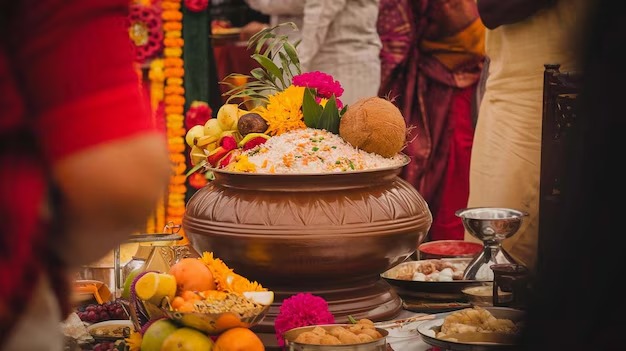
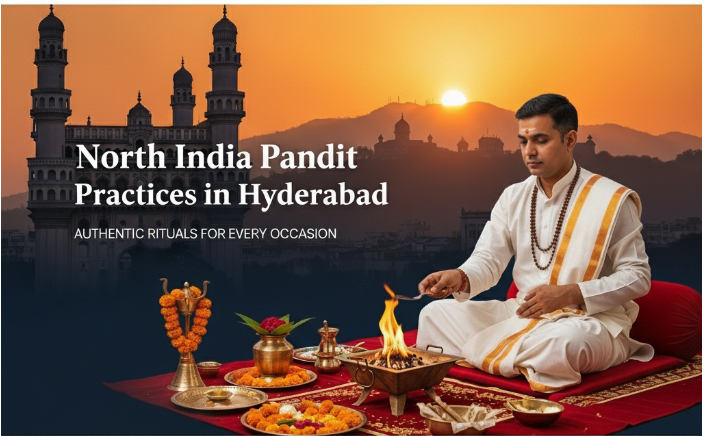
 By -
Admin
By -
Admin 0 comments
0 comments 0 views
0 views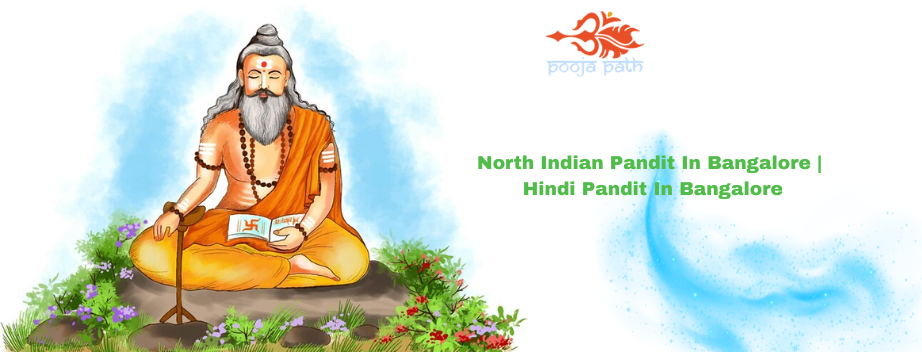



.png)
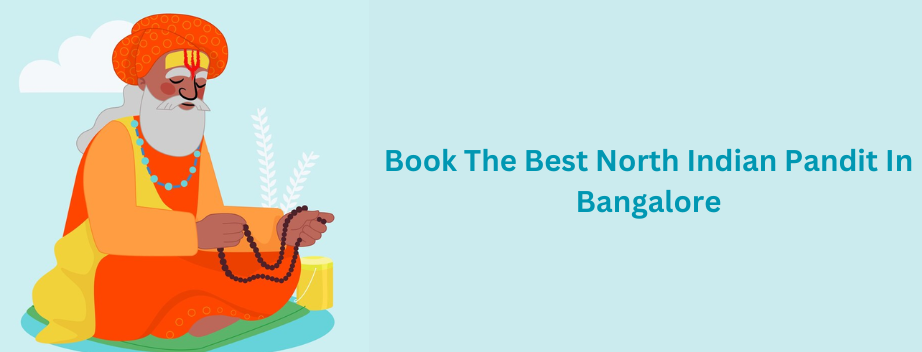
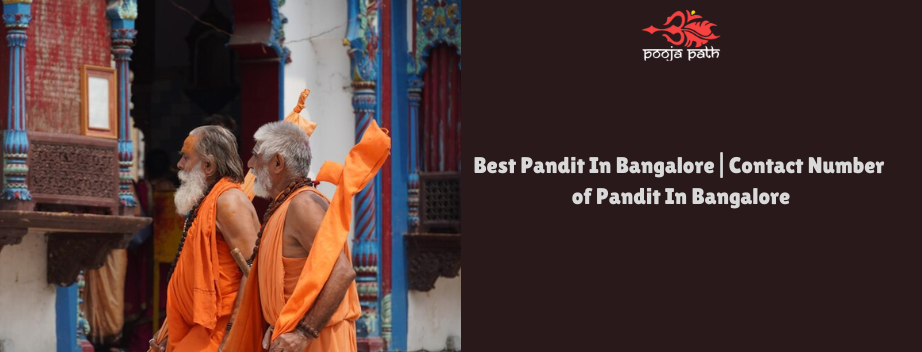

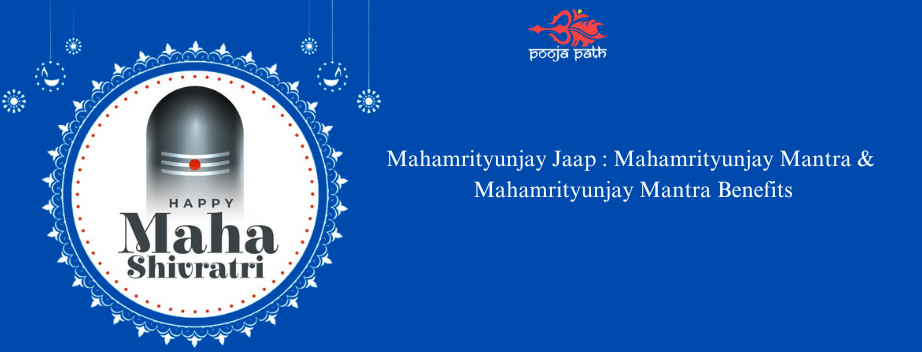

.png)

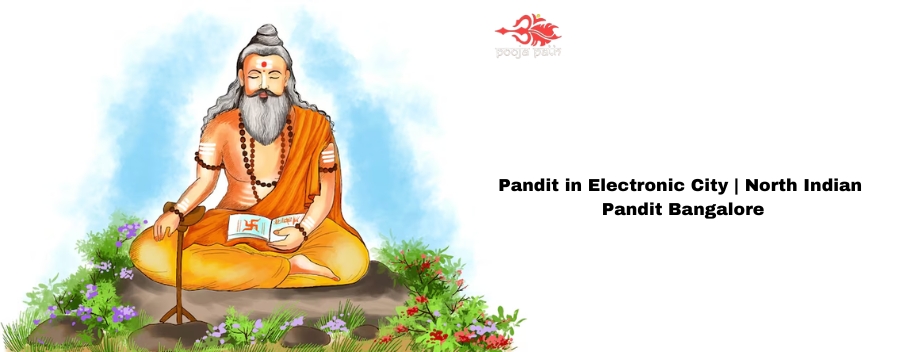
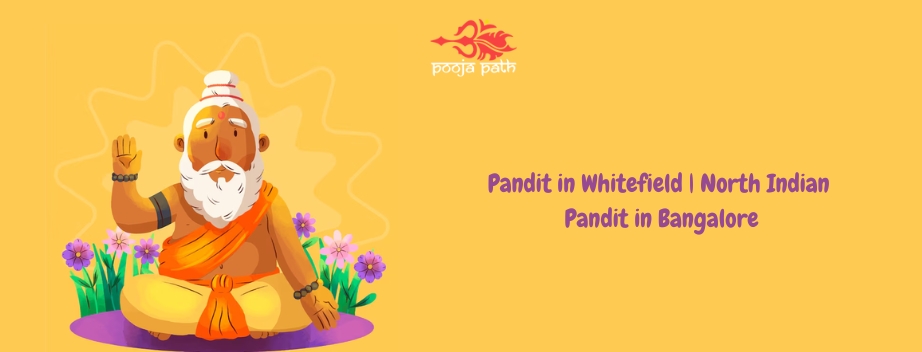
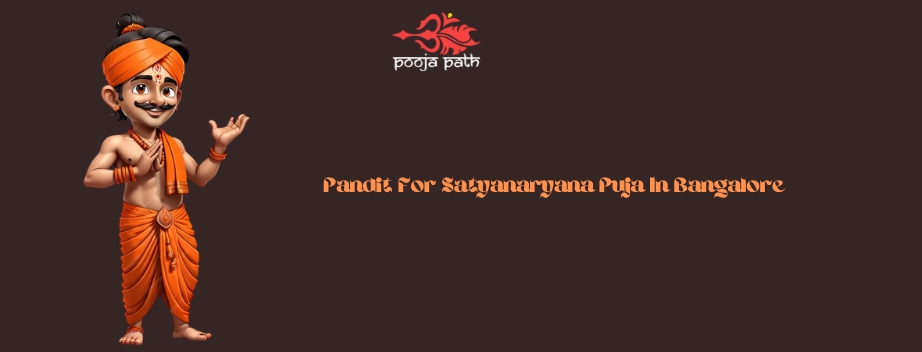
.jpg)
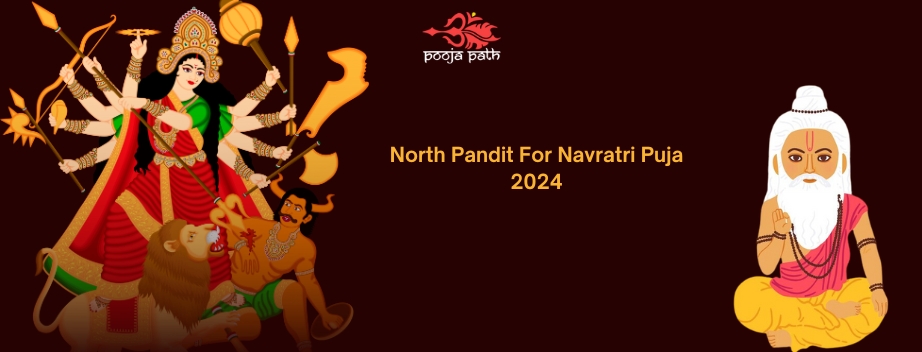
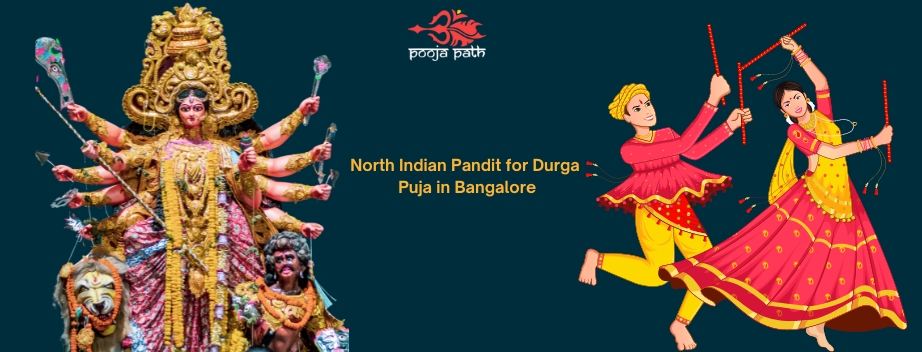

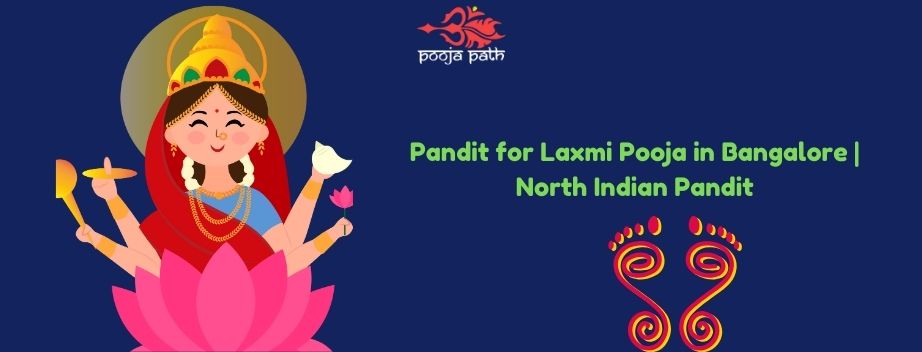

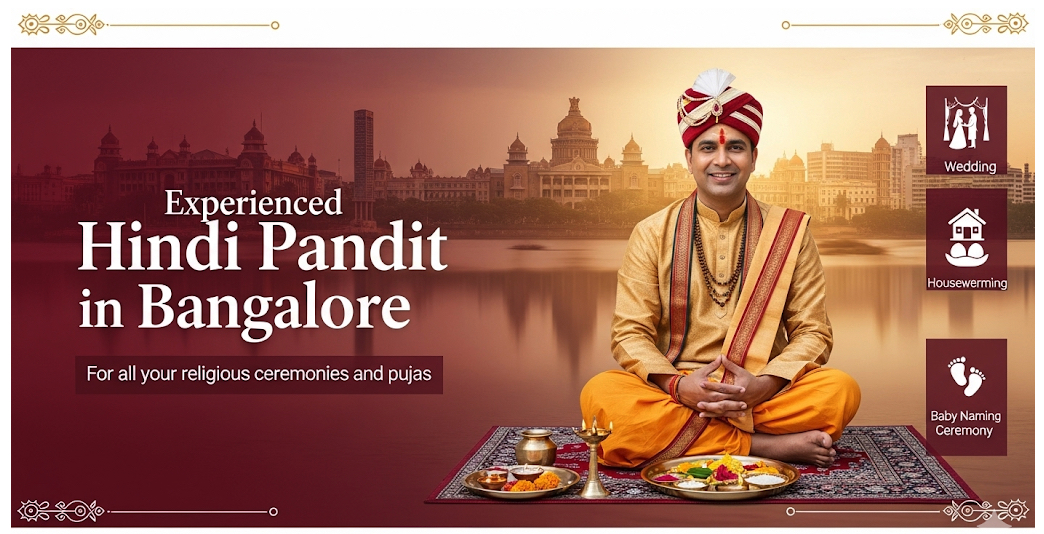

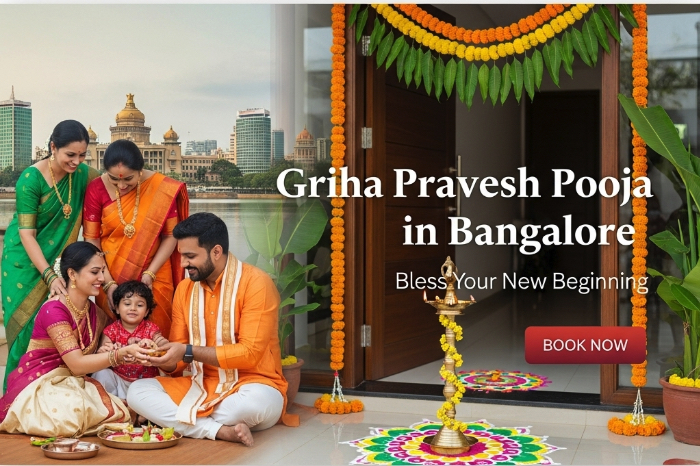

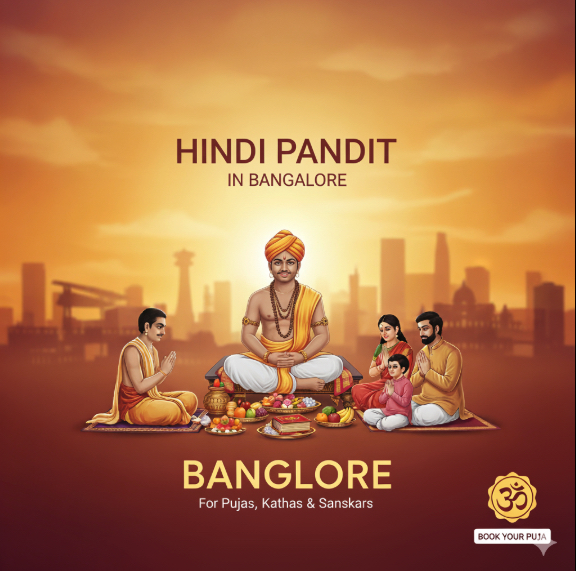

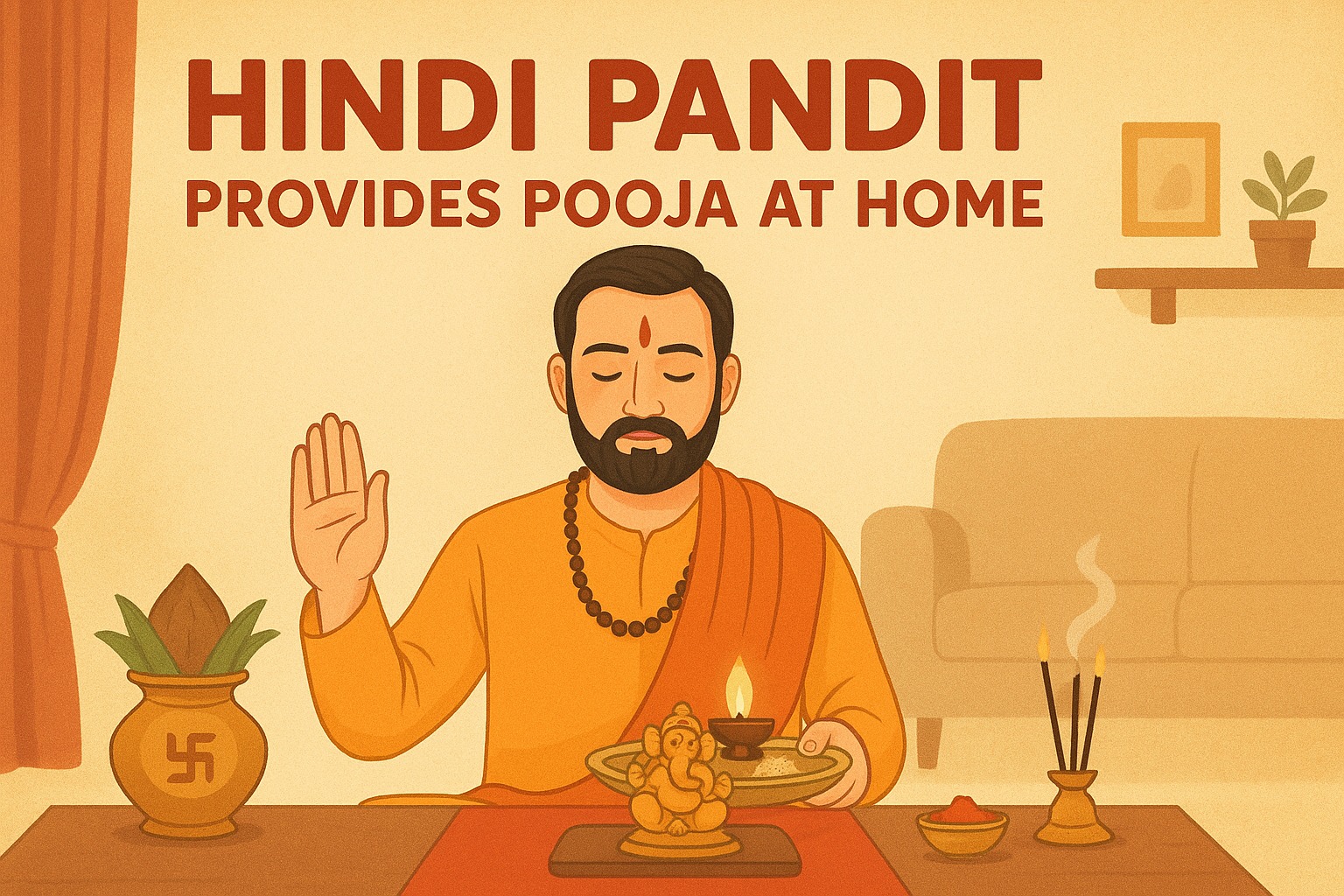
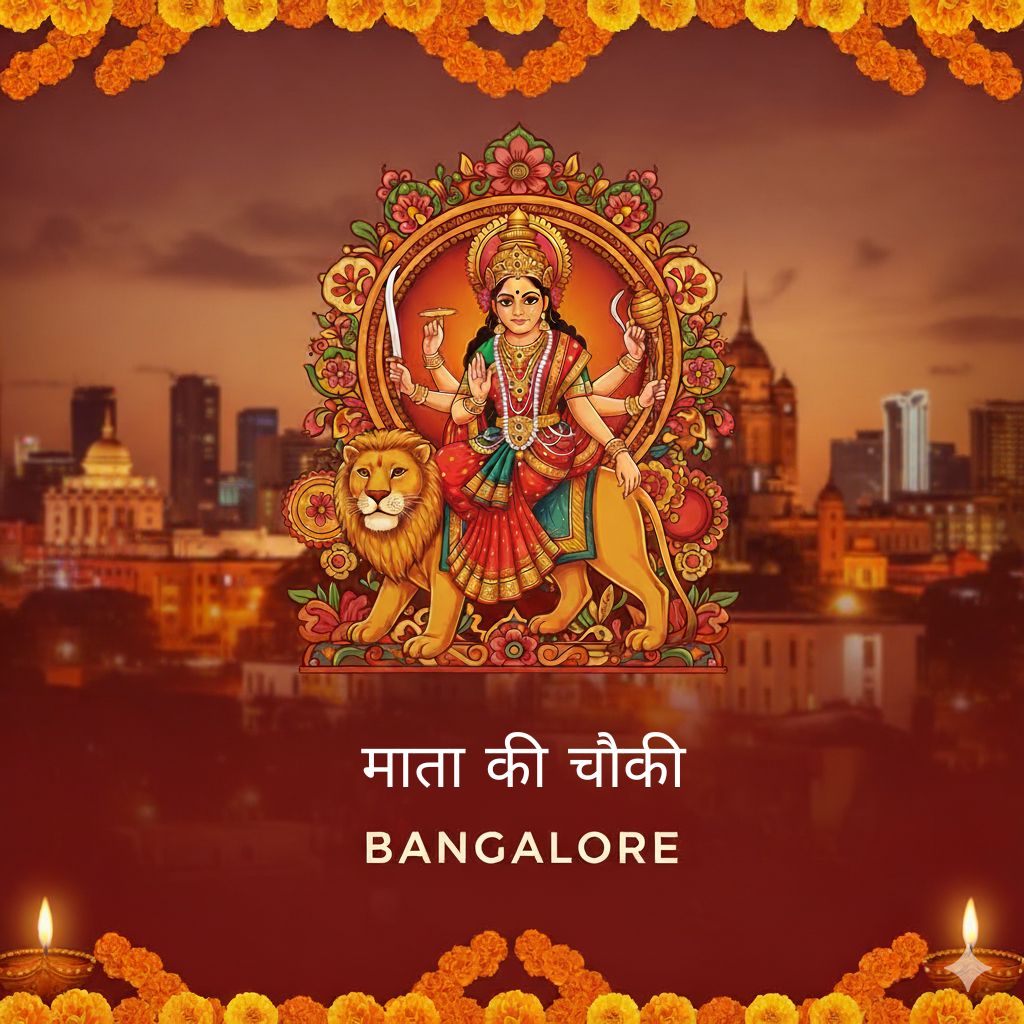
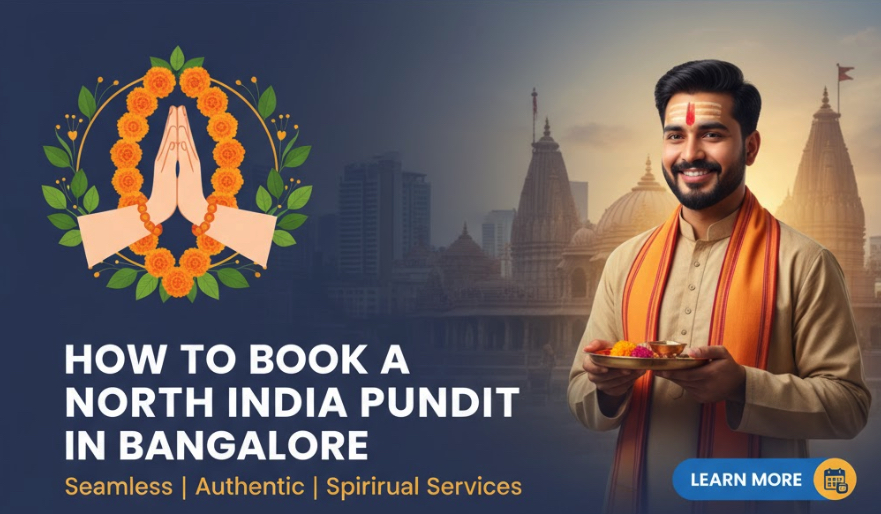
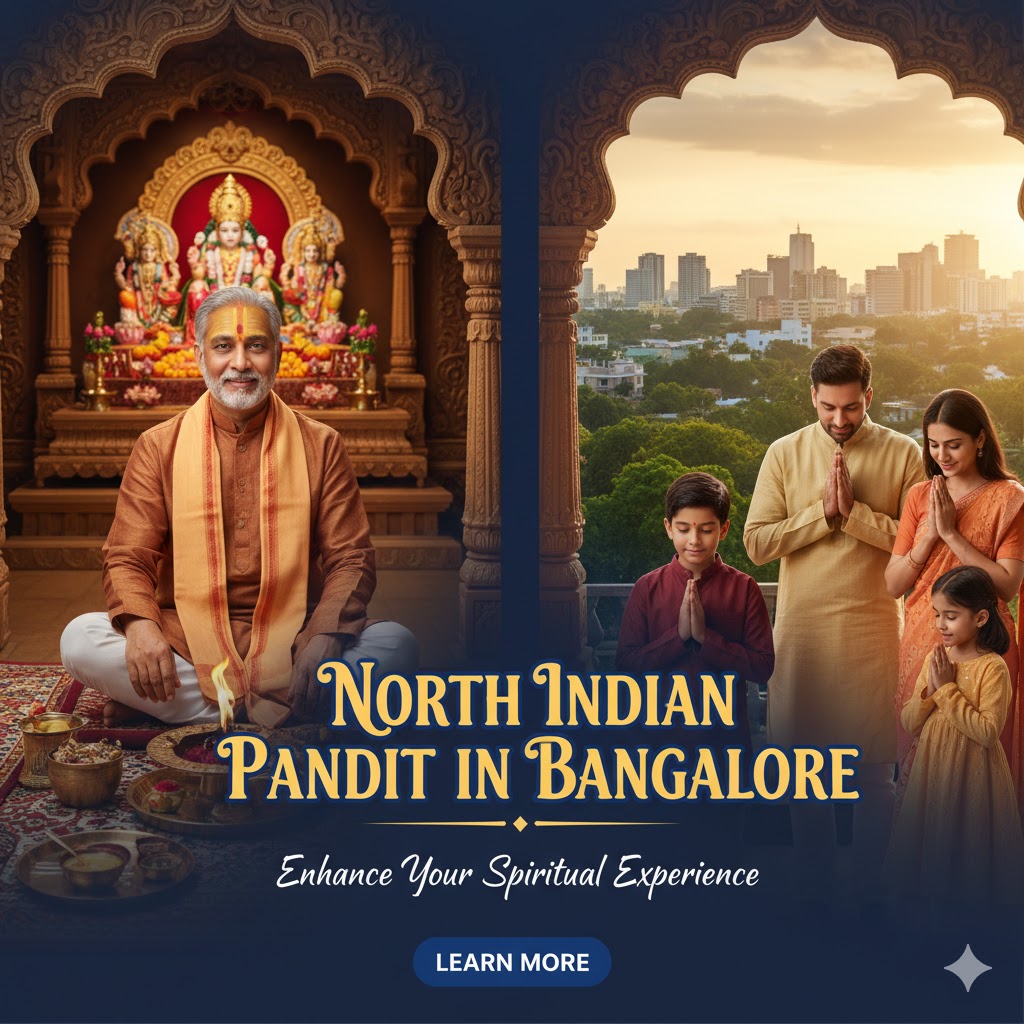
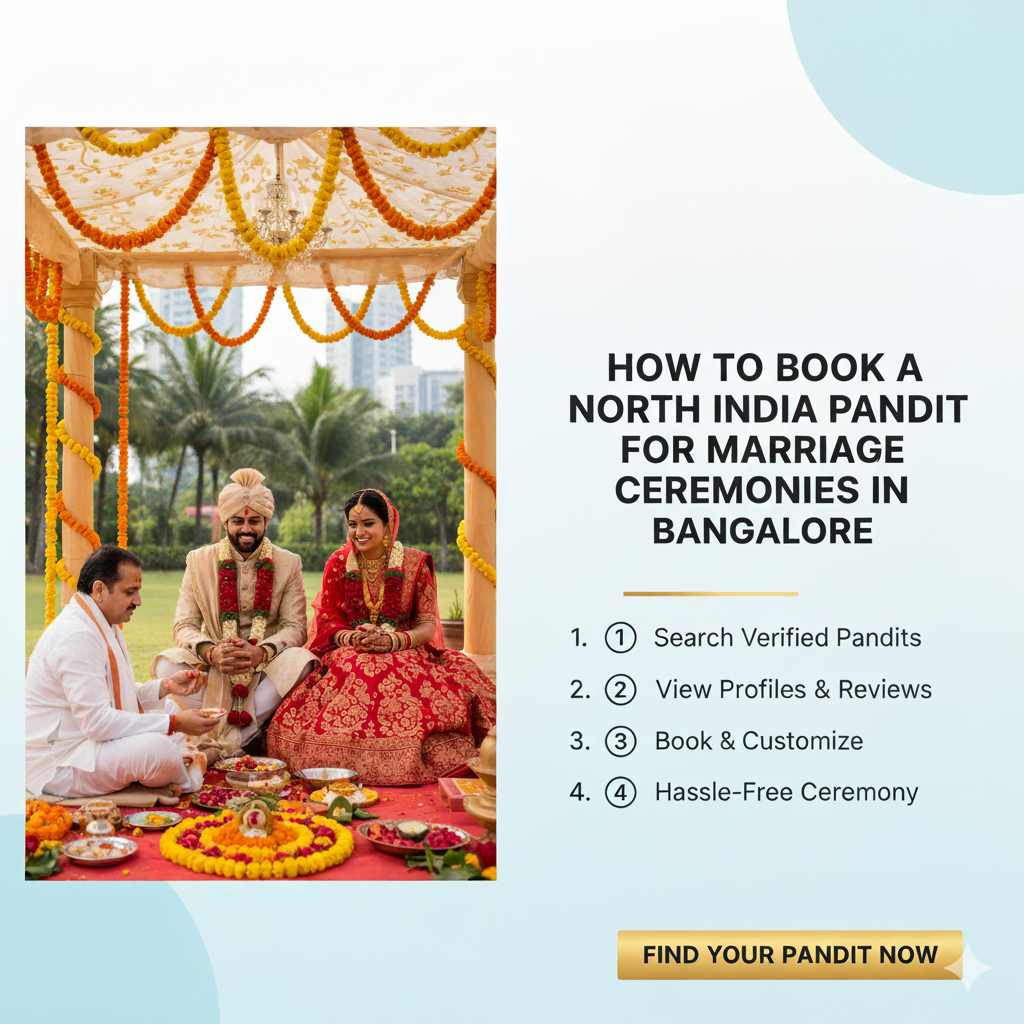
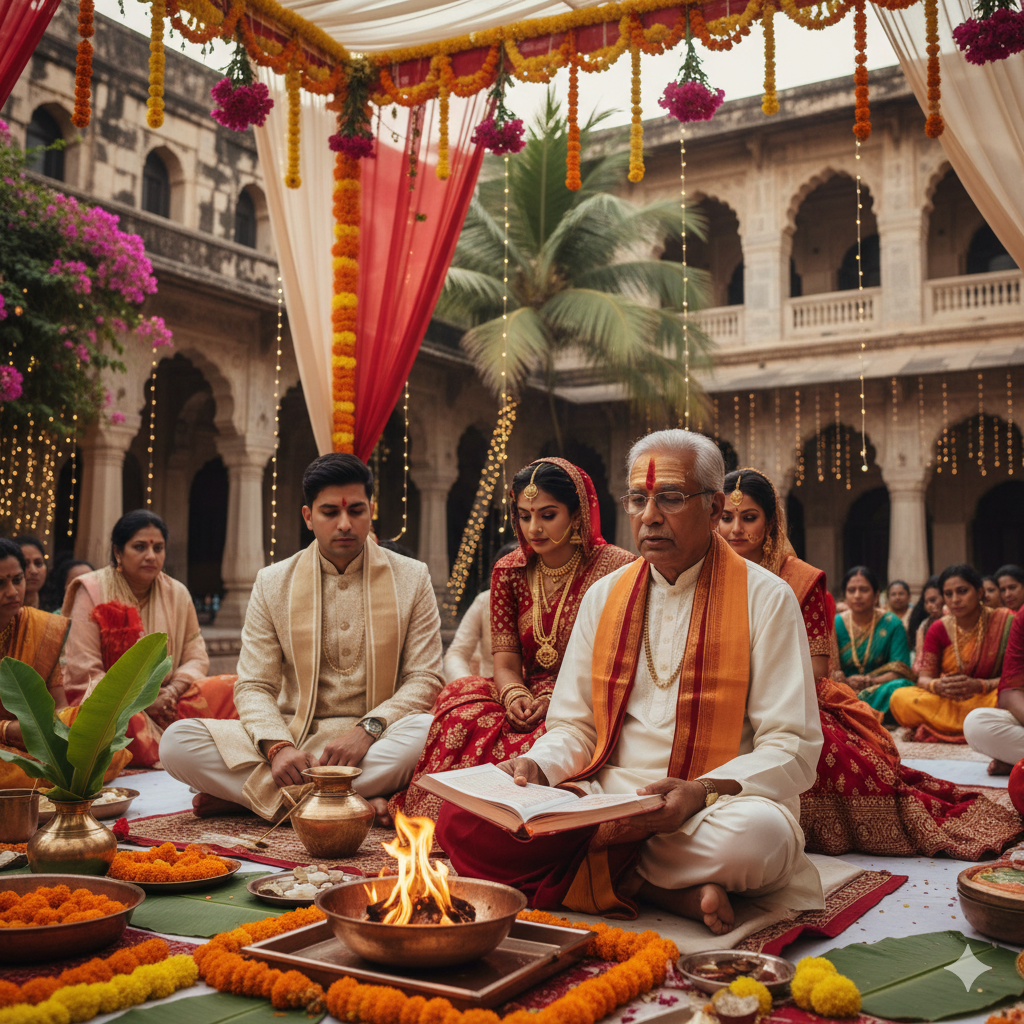

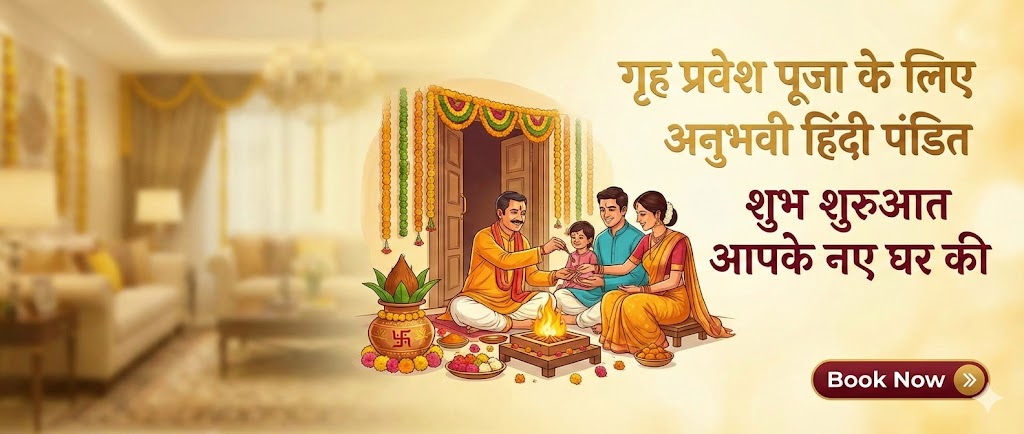
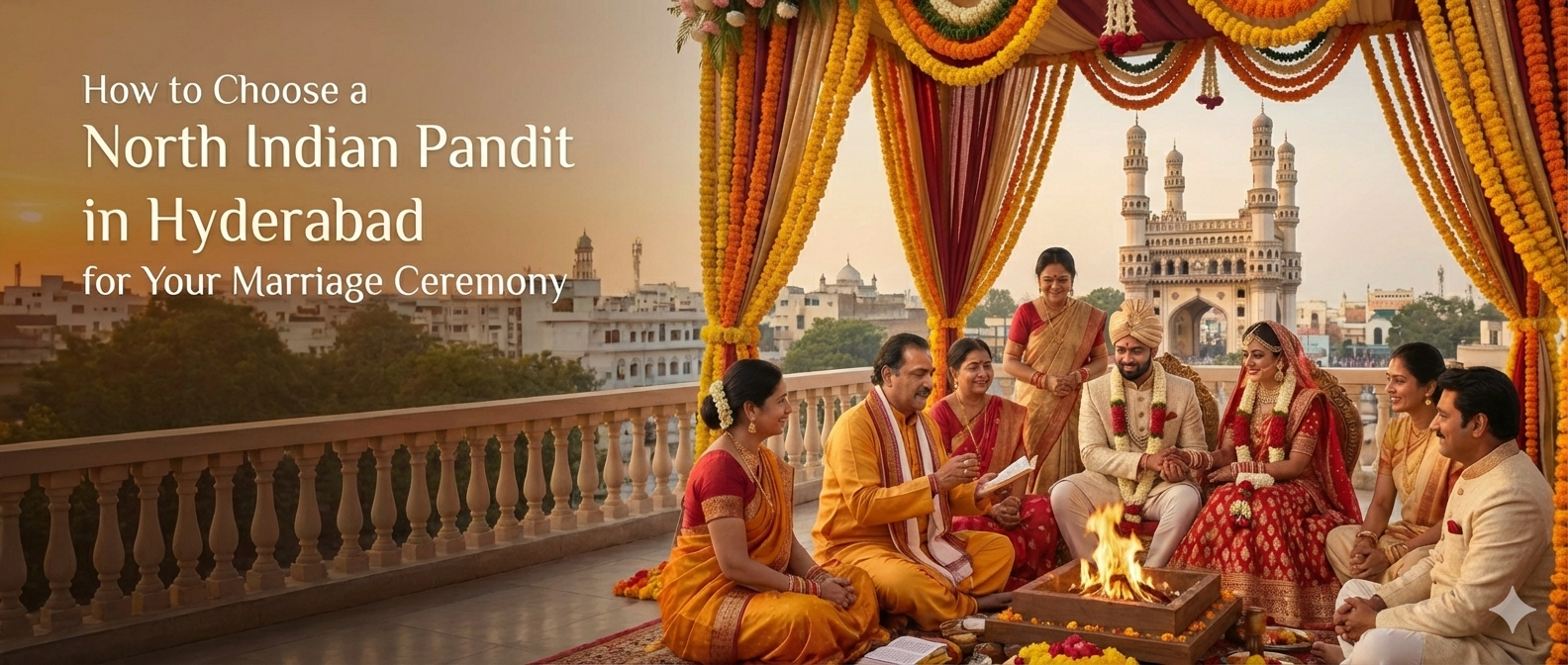



Leave a Comment